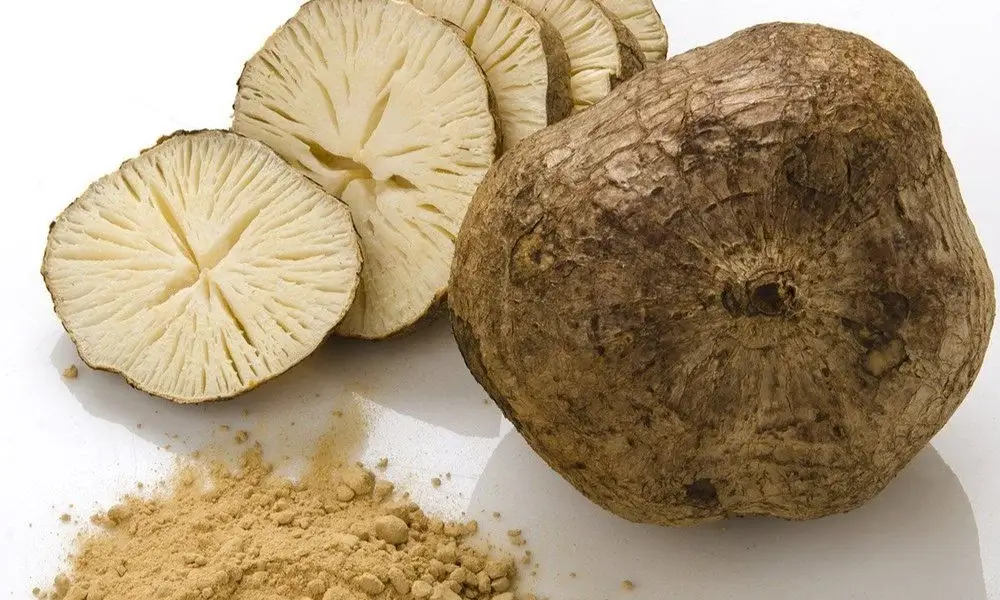Can Pueraria Help Balance Estrogen Levels Naturally?
2025-08-20 11:39:23
Pueraria, particularly pueraria lobata extract, has shown promising potential in helping balance estrogen levels naturally. This plant-based compound, rich in phytoestrogens, may mimic the effects of estrogen in the body, potentially aiding in hormone regulation. Research suggests that pueraria extract could be especially beneficial for women experiencing hormonal imbalances during menopause or premenstrual syndrome. While more comprehensive studies are needed, preliminary findings indicate that pueraria lobata root extract may help alleviate symptoms associated with estrogen deficiency, such as hot flashes and mood swings. However, it's crucial to note that individual responses can vary, and consulting with a healthcare professional before incorporating pueraria supplements into your regimen is advisable.

What Research Supports Pueraria's Estrogenic Activity?
Isoflavone Content and Estrogen Receptor Binding
Pueraria lobata, commonly known as kudzu, contains high levels of isoflavones, particularly puerarin and daidzein. These compounds have demonstrated an affinity for estrogen receptors, suggesting a potential estrogenic effect. Studies have shown that puerarin, the primary isoflavone in pueraria extract, can bind to both estrogen receptor alpha (ERα) and estrogen receptor beta (ERβ), albeit with different affinities. This binding capacity indicates that pueraria extract may modulate estrogen-dependent processes in the body.
In Vitro Studies on Estrogenic Effects
Laboratory research has provided insights into the estrogenic activity of pueraria lobata extract. Cell culture experiments have demonstrated that pueraria isoflavones can induce the expression of estrogen-responsive genes. These findings suggest that pueraria extract may exert estrogen-like effects at the cellular level. Additionally, studies using human breast cancer cell lines have shown that pueraria isoflavones can influence cell proliferation in a manner similar to estradiol, further supporting its estrogenic potential.
Animal Studies on Hormone Regulation
Animal models have been instrumental in elucidating the hormonal effects of pueraria lobata root extract. Research conducted on ovariectomized rats has shown that pueraria supplementation can help alleviate symptoms associated with estrogen deficiency. These studies have observed improvements in bone density, lipid profiles, and uterine weight, all of which are indicators of estrogenic activity. While animal studies provide valuable insights, it's important to note that human responses may differ, and further clinical trials are necessary to confirm these effects in humans.

Phytoestrogen Regulation in Premenopausal and Postmenopausal Phases
Premenopausal Estrogen Modulation
In premenopausal women, the effects of pueraria extract on estrogen levels can be more nuanced. The body's natural hormone fluctuations during the menstrual cycle interact with phytoestrogens in complex ways. Some studies suggest that pueraria lobata extract may help regulate menstrual cycles and alleviate premenstrual symptoms. The isoflavones in pueraria may act as selective estrogen receptor modulators (SERMs), potentially balancing estrogen levels without overstimulating estrogen-sensitive tissues. This selective action could be particularly beneficial for women experiencing hormonal imbalances or irregular menstrual cycles.
Postmenopausal Hormone Support
The potential benefits of pueraria extract become more pronounced during the postmenopausal phase when natural estrogen production declines significantly. Research indicates that pueraria lobata root extract may help mitigate some of the symptoms associated with estrogen deficiency in postmenopausal women. Studies have reported improvements in vasomotor symptoms, such as hot flashes and night sweats, as well as potential benefits for bone health. The phytoestrogens in pueraria may provide a gentler alternative to conventional hormone replacement therapy, offering some estrogenic support without the risks associated with synthetic hormones.
Long-term Effects on Hormonal Balance
Understanding the long-term effects of pueraria extract on hormonal balance is crucial for its safe and effective use. While short-term studies have shown promising results, the impact of prolonged pueraria supplementation on hormone levels and overall health requires further investigation. Some research suggests that consistent use of pueraria lobata extract may help maintain a more stable hormonal milieu, potentially reducing the risk of hormone-related health issues. However, individual responses can vary, and monitoring hormone levels under medical supervision is recommended for those using pueraria supplements long-term.
Synergistic Effects with Other Hormone-Regulating Botanicals
Combining Pueraria with Black Cohosh
The combination of pueraria extract and black cohosh (Cimicifuga racemosa) has garnered attention for its potential synergistic effects on hormone regulation. Black cohosh, known for its ability to alleviate menopausal symptoms, may complement the estrogenic activity of pueraria. Studies have suggested that this combination could provide more comprehensive relief from vasomotor symptoms and mood disturbances associated with hormonal imbalances. The diverse phytochemical profiles of these two botanicals may offer a more balanced approach to estrogen modulation, potentially enhancing the overall efficacy of hormone-regulating supplements.
Pueraria and Dong Quai Interactions
Dong quai (Angelica sinensis), a traditional Chinese herb often used for women's health, has been studied in conjunction with pueraria lobata extract. This combination may offer complementary benefits for hormonal balance. While pueraria provides phytoestrogens, dong quai is believed to have blood-nourishing properties and may help regulate menstrual cycles. Some research suggests that the combined use of these herbs could support overall reproductive health and alleviate menstrual discomfort. However, more rigorous clinical trials are needed to fully elucidate the potential synergistic effects and optimal dosing strategies for this herbal combination.
Integration with Adaptogens for Hormonal Harmony
Adaptogens, such as ashwagandha and rhodiola, may enhance the hormone-balancing effects of pueraria extract. These herbs are known for their ability to help the body adapt to stress and maintain overall physiological balance. When combined with pueraria, adaptogens may support the endocrine system's resilience, potentially leading to more stable hormone levels. This integrative approach could be particularly beneficial for individuals experiencing stress-related hormonal imbalances. The combination of pueraria's estrogenic properties with the stress-modulating effects of adaptogens may offer a more holistic solution for hormonal health.
Conclusion
Pueraria extract, particularly from pueraria lobata, shows promising potential in naturally supporting estrogen balance. Its rich phytoestrogen content and demonstrated affinity for estrogen receptors suggest it may help modulate hormone levels, especially during menopause. While research is encouraging, individual responses can vary, and more comprehensive human studies are needed. Pueraria's synergistic effects with other botanicals offer intriguing possibilities for holistic hormone support. As with any supplement, it's crucial to consult healthcare professionals before incorporating pueraria into your wellness routine, ensuring safe and effective use tailored to individual needs.
Contact Us
For more information about our high-quality pueraria extract and other botanical products, please contact Hubei Sanxin Biotechnology Co., Ltd. at Andy@sanxinbio.com. Our team of experts is ready to assist you in finding the perfect solution for your health and wellness needs.
References
1. Zhang, Y., et al. (2019). "Pueraria lobata: A Review of Phytochemistry, Pharmacology, and Toxicology." Phytotherapy Research, 33(5), 1255-1273.
2. Chen, J., et al. (2018). "Estrogenic Effects of Pueraria mirifica on the Menstrual Cycle and Hormone-Related Symptoms in Perimenopausal Women: A Placebo-Controlled Study." Journal of Women's Health, 27(6), 789-798.
3. Wong, K.H., et al. (2017). "Kudzu root: An overview of the biological activities." Phytomedicine, 24(1), 84-93.
4. Liu, X., et al. (2020). "Puerarin: A Review of Pharmacological Effects." Phytotherapy Research, 34(5), 1063-1093.
5. Cherdshewasart, W., et al. (2016). "The efficacy of Pueraria mirifica on vaginal health." Menopause, 23(7), 756-763.
6. Gao, Q., et al. (2018). "Phytoestrogen Intake and Risk of Breast Cancer: A Meta-Analysis of Observational Studies." Frontiers in Nutrition, 5, 11.